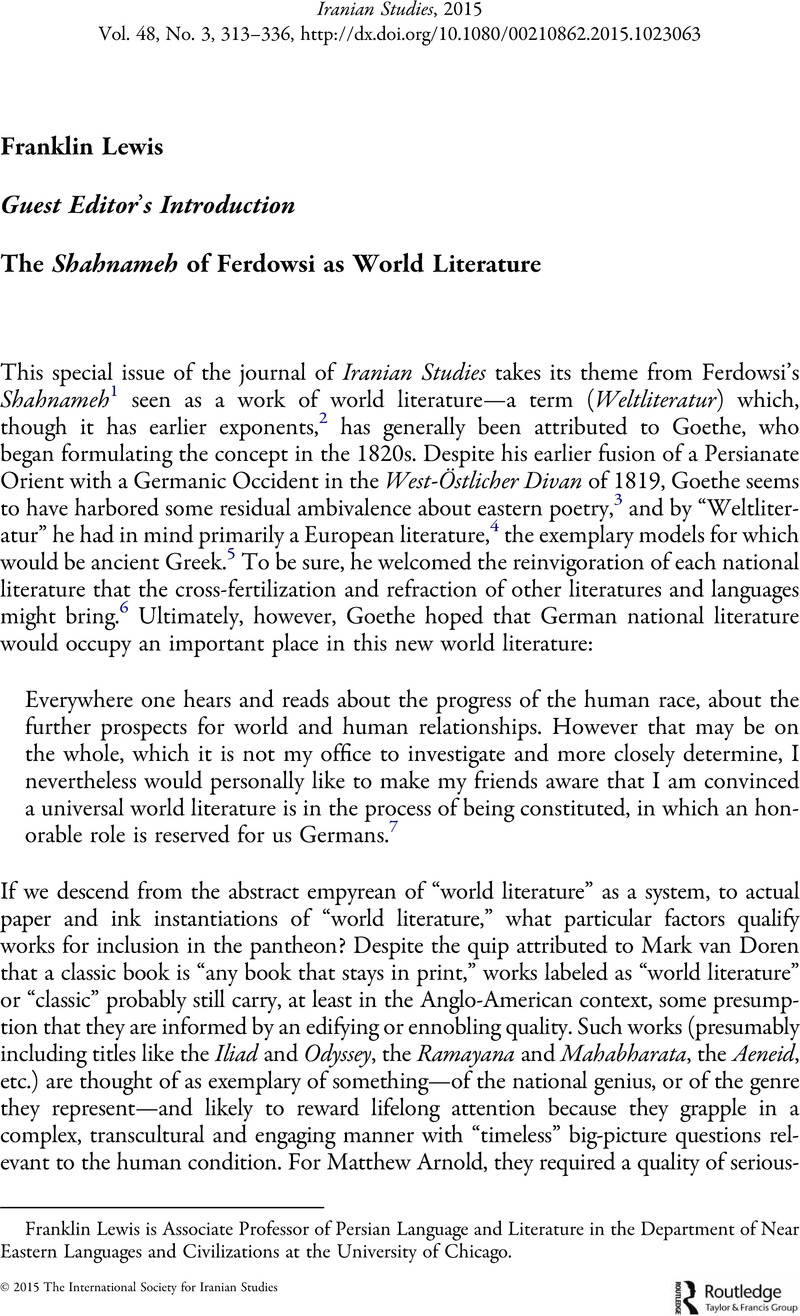Crossref Citations
This article has been cited by the following publications. This list is generated based on data provided by Crossref.
Skupniewicz, Patryk
and
Maksymiuk, Katarzyna
2019.
Gordāfarid, Penthesilea and Athena: the identification of a Greek motif in Ferdowsī’sŠāh-nāmaand its possible association with Hellenistic art in the East.
Mediterranean Historical Review,
Vol. 34,
Issue. 2,
p.
123.
Lewis, Franklin D.
2019.
A Companion to World Literature.
p.
1.
Azadibougar, Omid
2020.
World Literature and Hedayat’s Poetics of Modernity.
p.
53.
Jafarlou, Hamid Reza Safari
Naserou, Azim Jabareh
and
Ghorbani, Mohammad Hossein
2021.
Koshti/Wrestling: A Victory Key for Heroes in Shahnameh.
Sport, Ethics and Philosophy,
Vol. 15,
Issue. 4,
p.
522.
Würsch, Renate
2023.
Handbuch Versepik.
p.
83.



